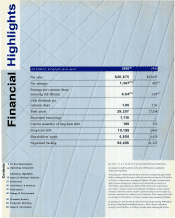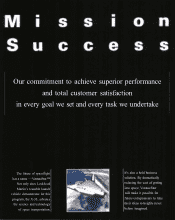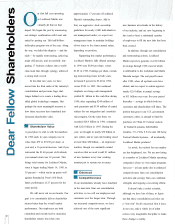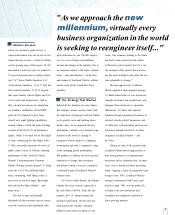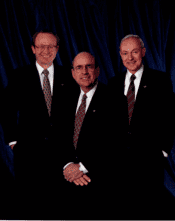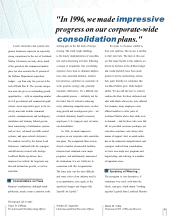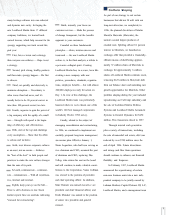Lockheed Martin 1996 Annual Report Download - page 8
Download and view the complete annual report
Please find page 8 of the 1996 Lockheed Martin annual report below. You can navigate through the pages in the report by either clicking on the pages listed below, or by using the keyword search tool below to find specific information within the annual report.
17 heritage companies was a salient factor
in our 1996 business wins. Of our major
competitions last year, we won an extraor-
dinary 68 percent of the programs and
63 percent of the dollars bid. Looking just
at the 21 we named as our 1996 "Focus
Programs" — those that have significant
strategic value — we achieved a 65 percent
win rate of dollars bid. And in January,
we won the first of our 1997 programs,
the high-priority Navy/DARPA Arsenal
Ship program. A few examples of our key
1996 wins are noteworthy:
VentureStar™ — NASA selected
Lockheed Martin to build a demonstrator
of a completely reusable launch vehicle
designed to revolutionize the economics of
access to space. Without the aeronautics,
space and electronics capabilities brought
together in our 1995 merger, we very
likely would not have won this program.
Our VentureStar concept is coming to life
with an all-star team from several operat-
ing sectors, working as a 'virtual
company,' without respect to organiza-
tional boundaries or locations. While the
$1 billion of activities under this coopera-
tive agreement with NASA are reim-
bursable over its multi-year term, its
treatment as a research and development
program is such that we do not include
these dollars in our year-end 1996
backlog.
Joint Strike Fighter —
Lockheed Martin was selected to lead one
of two competing teams to develop the
next-generation multi-role fighter for the
U.S. Air Force, Navy and Marine Corps,
and British Royal Navy. Again, our
talented, highly resourceful team prevailed
to offer a compelling combination: the
best, lowest risk, most affordable design.
Contracted activities under this phase of
the program are expected to approximate
$720 million, which again are reim-
bursable but not included in the reported
year-end backlog.
Space Based Infrared
System (SBIRS) — The Air Force
selected Lockheed Martin to lead a team
to develop SBIRS, an advanced missile
warning and tracking system. Lockheed
Martin will provide the satellites, ground
stations and systems integration for a total
systems solution against the threat of
enemy missile attack, whether from
ICBMs or Tactical Ballistic Missiles such
as the SCUD, which was widely used in
the war in the Persian Gulf.
Evolved Expendable Launch
Vehicle (EELV) — Lockheed Martin
was named one of two competitors for the
next phase of the U.S. Air Force's EELV
program, a family of lower cost launchers
that will eventually replace Delta, Atlas
and Titan.
Joint Air-to-Surface
Standoff Missile (JASSM) —
Lockheed Martin was one of two teams
selected to compete in a two-year
program to design and develop the JASSM
next-generation precision-strike missile
for the Air Force and Navy. JASSM will
allow pilots to knock out enemy targets
with pinpoint accuracy from safe distances.
Hanford Management &
Integration — Lockheed Martin is
part of a team that will manage activities
of the Department of Energy's Hanford
Site, a former plutonium production
facility in Washington state.
Maneuver Control System —
Lockheed Martin will provide the program
management and systems integration
for a critical part of the Army's futuristic
command and control architecture.
New Attack Submarine —
Lockheed Martin was awarded a U.S.
Navy contract to provide the command,
control, communications and intelligence
for the New Attack Submarine. Including
production options, the potential program
value is approximately $1 billion.
The potential value of all of these
programs combined could range from $100
billion to $500 billion and these programs
are extremely important to our business
base, profit and sales growth, as well as to
our technological capabilities. We salute
the men and women of Lockheed Martin
who are working together to apply the best
practices from so many proud heritages
to make such accomplishments possible.
From Many...One
Of all the challenges surrounding mergers,
acquisitions, consolidation and restructur-
ing, none is, in fact, more difficult, impor-
tant — or rewarding — than integrating


